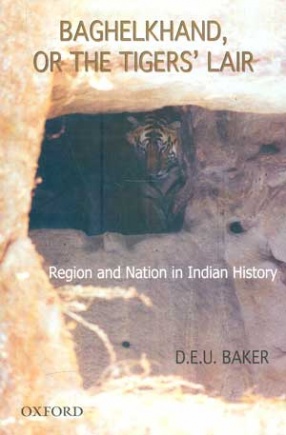How do we account for the creation of the Indian nation in 1947? Could this be attributed simply to the activities of the Indian National Congress? Presenting a comprehensive account of the region–from prehistory to the twentieth century–Baghelkhand or the Tigers’ Lair examines the different ways in which the little known region in Central India first became a part of the Indian nation (1947) and subsequently the state of Madhya Pradesh (1956). D.E.U. Baker argues that nation-building has to be seen as a process, non-determinist except towards the end, extending beyond the activities of the Indian National Congress. It encompasses a dialogue between the region and the external–often centralizing–states on the one hand, and migrations on the other. While these two forces gave the region its distinct identity, they also paradoxically forged political, social, and economic commonalities with wide regions of the country subject to similar influences. It was on the foundations of these myriad connections that the Congress was able to mobilize the political nation. Examining a wide range of primary and secondary sources across disciplines, this book makes an original contribution to the study of the relationship between region and nation in history. It will interest scholars and students of Indian history, sociology, and anthropology particularly those concerned with regional history, nation-building, nationalism and Central India.
Baghelkhand, or the Tigers’ Lair: Region and Nation in Indian History
In stock
Free & Quick Delivery Worldwide
reviews
Bibliographic information
Title
Baghelkhand, or the Tigers’ Lair: Region and Nation in Indian History
Author
Edition
1st ed.
Publisher
Oxford University Press, 2007
ISBN
195683218, 9780195683219
Length
xviii+345p., Illustrations; Plates; Maps; Glossary; Bibliography; Index; 22cm.
Subjects







There are no reviews yet.